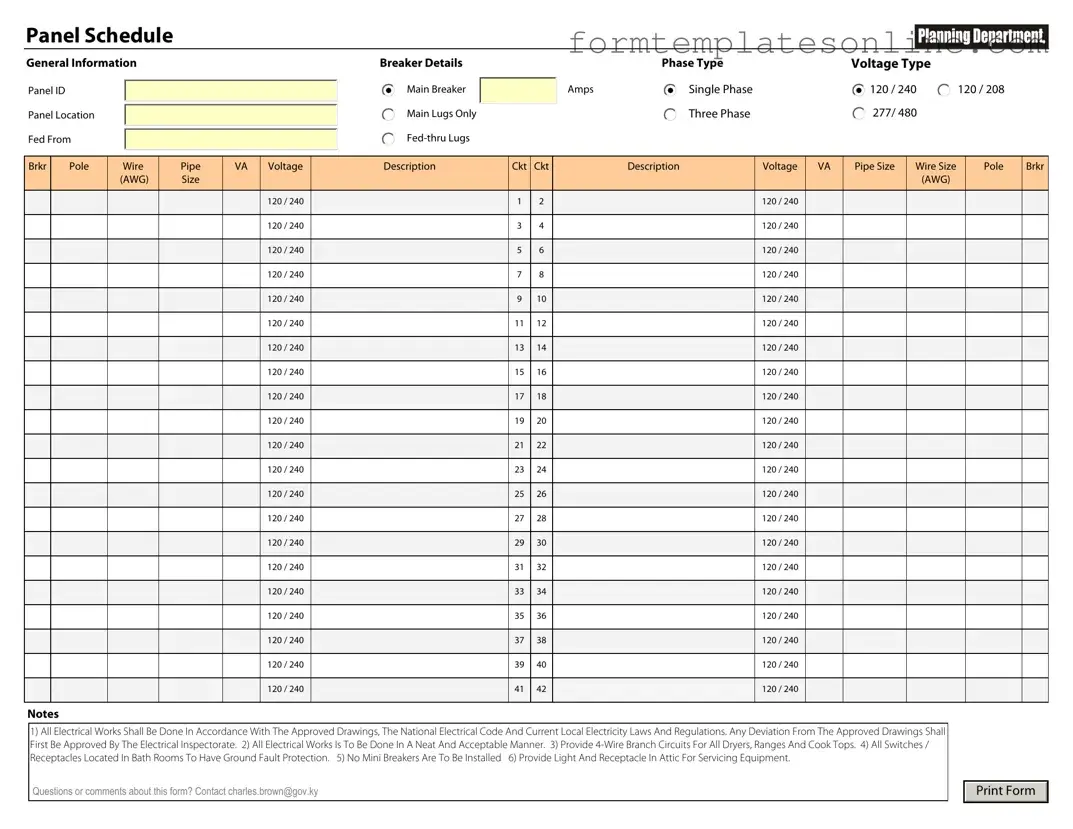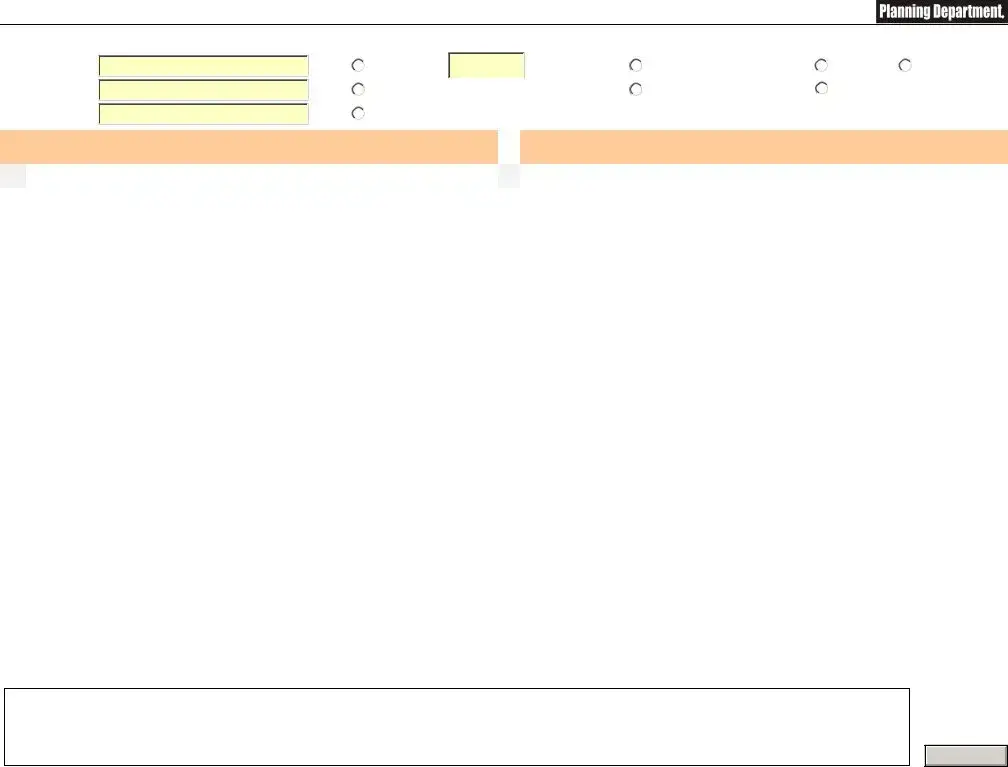What is an Electrical Panel Schedule form?
An Electrical Panel Schedule form is a document that outlines the distribution of electrical circuits within a building’s electrical panel. It provides essential information such as the circuit number, the load on each circuit, and the corresponding breaker size. This form is crucial for ensuring that electrical systems are properly organized and maintained.
Why is it important to have an Electrical Panel Schedule?
Having an Electrical Panel Schedule is vital for several reasons. It helps electricians quickly identify circuits, making troubleshooting more efficient. Additionally, it aids in planning for future electrical needs and ensures compliance with safety regulations. A well-maintained schedule can prevent overloads and potential hazards.
Who typically fills out the Electrical Panel Schedule form?
Typically, licensed electricians or electrical engineers fill out the Electrical Panel Schedule form. They gather information during the installation or inspection of the electrical panel. However, building owners or facility managers may also use the form to keep track of changes made to the electrical system over time.
What information is included in the Electrical Panel Schedule?
The Electrical Panel Schedule includes various pieces of information. You will find circuit numbers, load calculations, breaker sizes, and the purpose of each circuit. Additionally, it may list the type of equipment connected to each circuit and any special notes regarding usage or limitations.
How often should the Electrical Panel Schedule be updated?
It is recommended to update the Electrical Panel Schedule whenever there are changes to the electrical system. This includes adding new circuits, replacing breakers, or changing the load on existing circuits. Regular reviews, at least annually, can help ensure that the schedule remains accurate and reflects the current state of the electrical system.
Can I create my own Electrical Panel Schedule form?
Yes, you can create your own Electrical Panel Schedule form. While many templates are available online, it’s important to ensure that your form includes all necessary information. If you’re unsure about what to include, consulting with a licensed electrician can help you create a comprehensive and effective schedule.
What should I do if I notice discrepancies in my Electrical Panel Schedule?
If you notice discrepancies, it’s crucial to address them promptly. Review the schedule against the actual panel and identify any differences. It may be necessary to consult with an electrician to correct any errors or to update the schedule to reflect the current configuration accurately.
Is there a standard format for the Electrical Panel Schedule?
While there is no universally mandated format, many Electrical Panel Schedule forms share common elements. Most include sections for circuit numbers, loads, breaker sizes, and descriptions. You can find templates that follow industry standards, but feel free to adapt them to meet your specific needs.
Where should I keep my Electrical Panel Schedule?
It’s best to keep your Electrical Panel Schedule in an easily accessible location. Many people choose to place it inside the electrical panel door or in a maintenance file. Ensure that anyone who may need to reference it, such as electricians or maintenance staff, knows where to find it.

